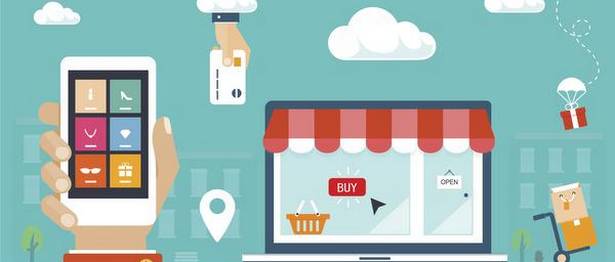AI, IoT and other tech-driven tools are not only tracking consumer buying behaviour but also increasingly influencing it
Tech trends are altering the retail scenario globally and in India the situation is no different. Today, the Indian ecosystem is embracing the latest innovations at an encouraging speed, which are forming an essential part of their go to market strategy.
Brands in India are evolving at a rapid pace and facing major disruption in various parts of the value chain. Innovative solutions, technologically advanced start-ups, hi-tech processes, modernisation and digitisation of back-end operations driven by tech-savvy consumers bagged by a growing internet and smartphone penetration are some of the major factors causing this disruption.
Digital/proximity marketing is being increasingly used to send highly personalised and relevant communications to the customers at the right moment. With the use of location-based technology, customers within the proximity of a retail store are connected and sent communications, catalysing their impulse and driving sales.
Consumer preferences
At the same time, as the Internet of Things (IoT) market in India expands and more devices get connected worldwide, tracking in-depth data about consumers gets easier for the companies. With the help of Artificial Intelligence, this data can be leveraged to understand the specific details about individual consumers such as buying behaviour, problem areas of the consumer, content viewed, frequency of usage, maintenance needs, etc. The personal information gathered can be used to deliver hyper personalised solutions. Chatbots are an excellent example of this.
To enhance user experience, augmented reality (AR)/virtual reality(VR) is being adopted thereby driving walk-ins and conversion to sale. AR/VR have multiple use cases such as virtual changing rooms, app-based try-outs, in-store walking directs, etc.
Vernacular content
Specifically for a country like India which has a huge diversity in languages and cultures, vernacular content (offering services in local/regional languages) is proving to be the next big thing to connect with the non-urban population. Internet users are increasingly giving preference to content in their local languages. The usage of vernacular content also enables targeting non-internet users to come aboard and engage in a seamless online experience in the language of their choice, thus enhancing their online experience.
The major drivers of such vernacular content, apart from the increased internet and smartphone penetration, are digitisation of rural India and a vast majority of Indian population speaking local languages; only around 15 per cent of Indian population speak English.
Social commerce
The next enabler in the consumer engagement ecosystem is social commerce which has enabled pictures and videos of products/brands posted by consumers on social networking sites and blogs, user experiences and stories shared on the Web, ratings, reviews and recommendations posted online, etc., to act as user-generated advertorial content.
Social commerce is not just restricted to social network driving sales, but consists of other forms such as peer-to-peer sales platforms, group buying, user-curated shopping, participatory commerce, etc.
Despite the rapid growth in modern trade and e-commerce over the past years, traditional retail still holds a major share of the retail landscape in India and is expected to continue to dominate in the foreseeable future. The need of the hour is a confluence of the retail channels, wherein each channel complements the offerings of the other and provides a seamless shopping service for the benefit of the consumers.
Empowering kirana stores
With just three per cent of kirana stores being tech-enabled and the rest with the willingness to adopt technology, the retail giants are using this opportunity to technologically and financially empower the kirana stores. E-commerce companies are collaborating with kirana stores for increasing their outreach, and are also providing them with an additional source of earning by way of acting as their channel partners/distributors.
For tech-enablement, kirana stores are provided with POS billing systems, app payments, and back-end integration with wholesaler. To help kirana stores cope with working capital shortages, easy loans are provided. Additionally, to improve profit margins, stores staff is trained on planograms, assortment selection, and product placement.
Government assisting
The government is also lending a helping hand to the whole ecosystem by its regulatory and structural reforms. Concentrated efforts by the government and focus on transforming processes has led to India moving up in the ‘ease of doing business’ ranking by 14 places to 63rd rank among 190 nations globally in 2019.
Further, liberalisation in reforms such as FDI in retail, unified tax system, digitisation of economy, labour reforms, support to small enterprises and start-ups, etc., are boosting the cause of development of the retail and consumer markets in the country. This is evident from the increased FDI equity inflows in retail trading from $224 million in FY18 to $443 million in FY19.
Given the increasingly favourable macroeconomic environment in India and the government’s consistent focus on making the business environment more conducive, a new era awaits for the future of the consumer.
[“source=thehindubusinessline”]





